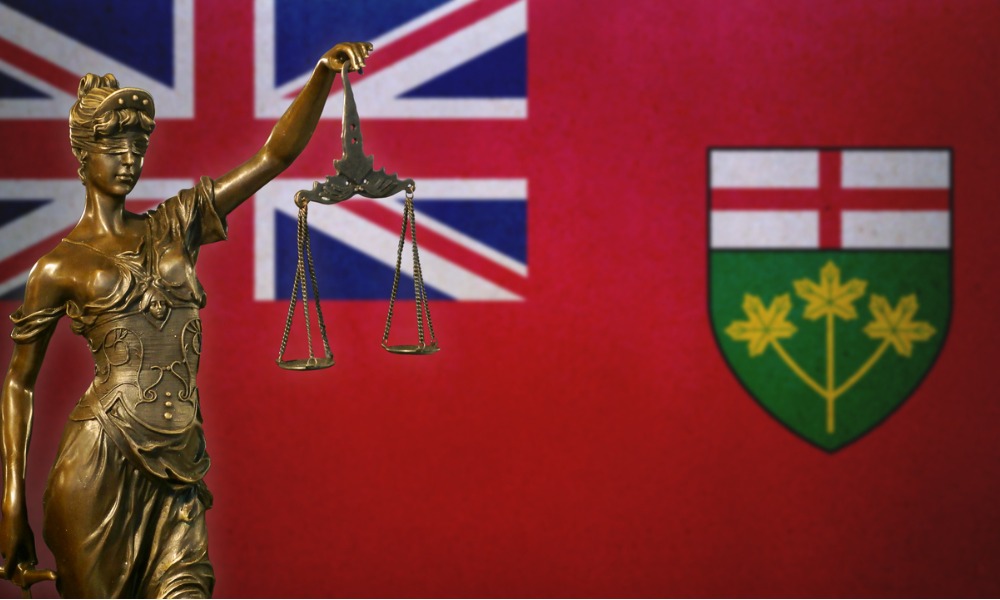The Ontario government has proposed changes to its Endangered Species Act for the first time in 10 years, with lawyers saying the shift could lead to longer timelines for decisions around how to protect endangered habitat.

The Ontario government has proposed changes to its Endangered Species Act for the first time in 10 years, with lawyers saying the shift could lead to longer timelines for decisions around how to protect endangered habitat.
The proposed changes would impact how long the government has to create plans to protect species that are designated as endangered. They would also give the provincial environment minister additional discretion in the process around the protection plans, as the responsibility for the act has been moved to that portfolio, away from the natural resources ministry.
Jonathan Kahn, a partner at Blake Cassels & Graydon LLP in Toronto, says the endangered species regime increasingly affects any form of development in Ontario, whether it’s residential or commercial.
“You have a situation where habitat was extremely generously defined because the [provincial] legislation allows for a permitting process, but under the planning regime, it became an absolute prohibition where nobody creating the ESA regime intended that,” says Kahn.
Currently, species are added to the Species at Risk in Ontario list, which falls under the provincial Endangered Species Act. The provincial government carries out further examinations to identify the relevant habitat for the affected species.
The provincial government also determines what appropriate or applicable exemptions are for the species and its habitat by means of a permitting process so that there can still be development in the area if possible.
In some cases, Kahn says, the way the Endangered Species Act interacts with other legislative and regulatory regimes can create problems. The broad powers granted to the provincial minister of the environment to designate the boundaries of the habitat to be protected can sometimes run afoul of the planning regime, he says.
Under the provincial Endangered Species Act, development can happen with a permit, says Kahn. However, the designation of protected habitats by the provincial minister can inadvertently get these lands swept up into municipalities’ natural heritage systems, where development is prohibited regardless of an ESA permit.
Kahn says he knows of stakeholders in Ontario who believe that the listing process itself has not been as rigorous as it should be and that, in some cases, the Committee on the Status of Species at Risk in Ontario has been using dated or deficient data.
“Once something gets listed as threatened or endangered, it is virtually impossible for it to be de-listed, even if it becomes apparent with new information that the species is much more common than previously thought,” says Kahn. “Those are among the questions that the government has been seeking information on.”
The proposed changes include extending the timelines from listing a species on the SARO that result in the automatic prohibitions to one year from three months; and the provincial environment minister will be given new powers to require COSSARO to reconsider if a species should be listed, provided the minister’s opinion is based on scientific information.
This would give the minister the authority to temporarily suspend species and habitat protections for up to three years for some newly listed species if they meet certain criteria, as well as give the minister discretion to extend the timelines to respond to the minister’s preparation of recovery strategies.
Currently, the provincial government has nine months to prepare a response statement that outlines the actions it intends to take in response to the recovery strategy, and the provincial minister has five years from the publication of the response statement to review the progress toward the protection and recovery of the species.
The proposal would also create a new Crown agency — the Species at Risk Conservation Trust, which aims to support the protection and recovery of species at risk.
Janet Bobechko, a senior partner in the environmental law group at Norton Rose Fulbright Canada LLP in Toronto, says there is always some give and take between proponents and government in species-at-risk discussions.
“Having acted for clients who have to get some of these permits and approvals, I recognize that there is a lot of paperwork and how, when we were selling properties that had species-at-risk plans attached to them, the approvals needed to be signed by the minister — that was its own process,” says Bobechko.
Bobechko says some of the proposals for extended timelines for listing species on the SARO list could be a positive because sometimes the current ones are not long enough for proponents to plan and respond.
Rodney Northey, a partner at Gowling WLG in Toronto and head of the firm’s environmental law practice, says that, while the government is trying to signal that the proposed changes will improve on the current system, he doesn’t see much that will actually be improved.
“None of these [changes] are getting at what the problems are and the potential for conflict,” says Northey.
He lists the main problem with the proposed changes as the lack of a transparent process or timeframe for the government in moving from designating a species on the SARO list to the recovery plan for which a landowner is responsible, especially as mandatory timelines are being made discretionary.
“They’re just buying themselves a lot more time to do very little,” says Northey.
He says he is concerned about the possibility that landowners could simply pay into the trust without necessarily understanding that they have habitat that needs protecting, given that it advertises itself as an option to pay a charge in lieu of completing certain on-the-ground activities required by the act.
“How is that going to work?” asks Northey. “Is it going to be a feeding frenzy where everybody that has property throws money into the ring, and then there’s a frenzy to develop everything they possibly can before the Crown agency gets back to them and figures out what’s going on? I don’t know how this maneuvre is going to produce a good result.”
Northey says he is also concerned with the fact that the reforms do not deal with Indigenous communities and how they can get involved with protecting these species relevant to their own objectives. He notes that many Indigenous communities in Ontario see themselves as having a stewardship role with these species.
“We could take an example of caribou in Northern Ontario,” says Northey.
“There is no clarity as to what part of Northern Ontario is or is not important habitat for the caribou. The federal government has, under its act, tried to lock down what it thinks is going on, but Ontario has refused to clarify what approach it’s taking.”
Northey says the uncertainty between the federal act and the proposal by the Ontario government creates worry for Indigenous communities that the provincial and federal governments will work a plan for the caribou out without First Nations having a say.
“It’s hard to see just how all of this plays out properly,” says Northey.










